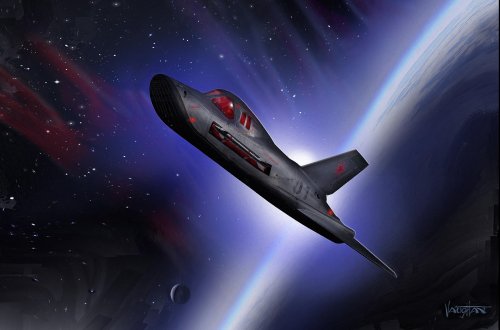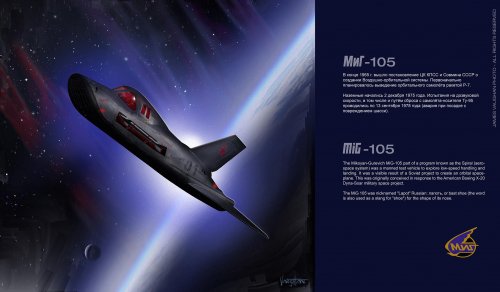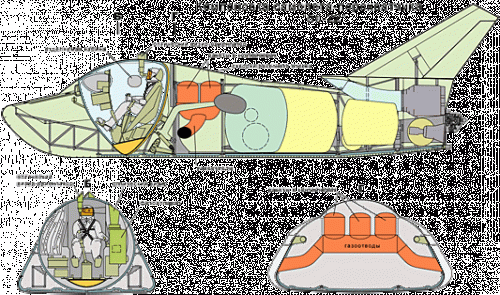MANNED ANTI-SATELLITE SYSTEM
E. E. Honeywell
General Dynamics Corporation
Pomona Division
Pomona, California
INTRODUCTION
This paper presents a conceptual design of a system which provides for
close inspection of earth satellites by man and, in addition, a satellite
negation capability which can be employed in the event the target satellite
is determined to be hostile. It is not proposed that the system (or any of
the major sub-systems) is the optimum solution to the problem of satellite
defense; it is merely one of several plausible approaches.
SYSTEM CONCEPT
General Description
The system to be presented is tailored to the following specific concept.
Upon designation of a target satellite a manned vehicle ascends from
a ground launch site (or from a parking orbit) on a trajectory whose apogee
is at a point of tangency between the paths of the two vehicles. Initiation
of the ascent is timed so that the manned vehicle arrives at apogee a prescribed
distance from the target. This distance is based on the estimated
minimum safe displacement between the manned vehicle and an assumed offensive
target satellite, and the maximum range capability of a practical rendesvous
radar design. The currently prescribed value is 50 miles. At apogee the
manned vehicle injects into the target's orbit (in general this requires a
planar transfer) and its displacement from the target is maintained at the
prescribed value.
The manned vehicle carries a number of devices whose dual mission is
to perform remote, close-in inspection of and, if necessary, to negate the
target. If the target exhibits any sign of hostility then the inspection
mission is immediately by-passed or interrupted in favor of the negation
mission, A hostile sign might be any of the following: (a) destruction or
attempted destruction of the manned vehicle, (b) jamming of the communication
and radar links, and (c) an evasive maneuver.
After successfully engaging the primary target the manned vehicle
will remain in orbit to perform similar missions as the opportunity arises.
A three day life support is considered; however, the duration of the mission
might be shortened due to consumption of maneuver fuel, use of all inspector/
killer mechanisms carried, or occurance of most opportune or practical time
for reaching desired landing site on earth.
One possible system concept for performing this mission is illustrated
in Figs 1. The Titan III boost vehicle is employed to place the manned vehicle
and mission module in earth orbit.
The three man command module is lenticular in shape and is the only
portion of the system which re-enters the atmosphere. The reasons for selecting
this particular configuration will be dealt with in the latter portions
of this paper.
The mission module consists of four satellite inspector/killer mechanisms
the fire control radar, and the propulsion system for orbital maneuvers.
Exploded views illustrating the system components are given in Figs.
2 and 3. As can be seen, the cockpit can be separated from the command module
for mission abort while on the launch pad or during the initial phases of
ascent. For abort after attaining supersonic velocity, the complete command
module would be separated from the booster by the maneuver propulsion system.
The command module could glide to an emergency landing site and land in the
normal manner or the cockpit could be ejected and landed by parachute.







